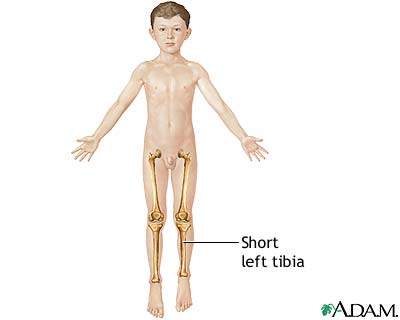Health Topics
URL of this page: //medlineplus.gov/ency/presentations/100127.htm


Overview
The most common bones treated with lengthening procedures are the bones of the leg, the tibia and the femur.
Surgical treatment may be recommended for severe unequal leg lengths caused by:
- Poliomyelitis and cerebral palsy
- Small, weak (atrophied) muscles or short, tight (spastic) muscles may cause deformities and prevent normal leg growth
- Hip diseases such as Legg-Perthes disease
- Previous injuries or bone fractures that may stimulate excessive bone growth
- Abnormal spinal curvatures (scoliosis)
- Birth defects (congenital deformities) of bones, joints, muscles, tendons, or ligaments
Review Date 11/7/2024
Updated by: C. Benjamin Ma, MD, Professor, Chief, Sports Medicine and Shoulder Service, UCSF Department of Orthopaedic Surgery, San Francisco, CA. Also reviewed by David C. Dugdale, MD, Medical Director, Brenda Conaway, Editorial Director, and the A.D.A.M. Editorial team.



